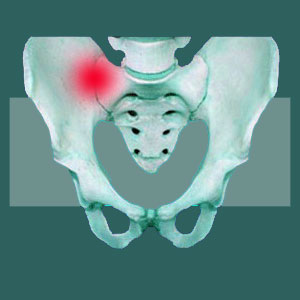
Mechanical sacroiliac pain describes symptoms that occur due to mobility concerns in the SI joint. Mechanical pain can occur when the joint becomes hypermobile or when it becomes hypomobile, accounting for a variety of diagnoses.
Although the sacroiliac joint normally does not move much compared to other bodily joints, it does indeed mobilize through a highly regulated range of motion. When mechanical issues cause the SIJ to change in its ability to mobilize correctly, pain can result.
This discussion focuses on explaining the reasons why pain might occur when the mechanics of the sacroiliac joint are compromised. We will detail both excessive and deficient ranges of motion and their resulting painful expressions, as well as the typical treatment options. If you have been told that you are suffering from dysfunction of the sacroiliac joint, this article provides some important knowledge that you must understand before seeking medical or complementary medical treatment.
What is Mechanical Sacroiliac Pain?
Mechanical pain describes symptoms which originate due to problems affecting the design and functionality of the SIJ. The joint is engineered to move in a regulated manner, even though it outwardly appears to be solidly fused. When the joint becomes overly tight or overly lax, painful expressions might result and may become debilitating.
Mechanical pain in the sacroiliac is difficult to accurately diagnose, since the typical range of motion in the SIJ varies rather extensively from individual to individual. Additionally, the joint barely moves at all, so ascertaining abnormal degrees of movement is challenging due to the normally very limited range of motion present in the structure. It is for this reason that mechanical pain in the sacroiliac is often misdiagnosed. Patients who receive such diagnoses should always investigate the validity of such claims and make sure the verdict is correct before pursuing treatment.
Hypermobile Mechanical Sacroiliac Pain
Sacroiliac hypermobility describes an excessive amount of movement in the joint, unilaterally or bilaterally. In these cases, the sacroiliac is moving too much and is producing pain due to specific functional problems or overall structural instability, particularly upon weight-bearing. Pain might originate in the regulating ligaments of the joint or from the bony surfaces of the joint itself interacting.
Hypermobility is a relative term when it comes to the sacroiliac joint. This is because each individual demonstrates a different degree of motion in the joint which is considered normal for them. Therefore, although “typical” ranges of motion have been established for the sacroiliac joint, specific individuals might fall far outside of this usual range on both ends of the spectrum, making diagnostic processing difficult and highly subjective.
Treatment for hypermobile joint pain in the SIJ may involve strengthening the supporting ligaments or might require surgical SI joint fusion, depending on the particulars of the causative hypermobility condition.
Hypomobile Mechanical Sacroiliac Pain
On the flip side of the coin, hypomobility in the sacroiliac might also cause pain is less common instances. Hypomobility describes a lack of normal joint movement, which in the sacroiliac is already very limited. As with hypermobility issues above, diagnostic processing is often inaccurate, resulting in mistaken diagnostic conclusions and failed treatment. In some cases, this misdiagnosis actually makes things worse when treatment actually encourages additional pain, rather than resolving it.
Some patients demonstrate reduced movement in the joint, but still maintain some restricted range of motion. Other patients might demonstrate organic joint fusions that are deemed to be painful and possibly even make the joint unstable or especially susceptible to traumatic injury.
Treatment might involve stretching and exercising the supportive ligaments surrounding the joint or ironically might seek to resolve pain due to reduced movement by completely fusing the joint into a more stable configuration.
Sacroiliac Joint Pain > Causes of Sacroiliac Pain > Mechanical Sacroiliac Pain





